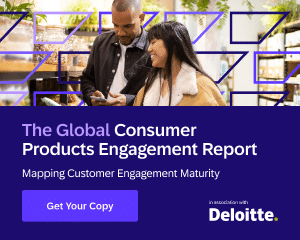It’s part of most people’s daily routine—checking the weather app before heading out or making plans for the weekend. But as weather patterns grow increasingly volatile and sometimes unpredictable, drawing on weather insights is becoming essential for businesses too.
I’m Evan Gold, EVP Global Partnerships & Alliances, with Planalytics, the business-focused weather analytics company. We have been an SAP partner for several years and have recently partnered with SAP Emarsys to incorporate our weather analytics into the Emarsys Customer Engagement Platform. Let’s look at what weather analytics is about and why these insights are important for businesses.
Our weather is increasingly in the news. The recent hurricanes in the Southeastern United States, flooding across Central Europe, heatwaves, and tropical storms in South and Southeast Asia demonstrate the devastating toll extreme weather has on our lives, homes, businesses, and infrastructure.
While nothing compares to the profound impact events like these have on individuals and communities, weather volatility is also one of the biggest climate-related risks that consumer businesses now face.
Weather volatility and its impact on consumer demand
No other external factor affects consumer demand as frequently, directly, or significantly as changes in the weather. According to the American Meteorological Society, the weather alone influences about one trillion dollars of global retail sales annually. Despite this fact, the weather remains one of the least understood and least acted-upon elements in business decision-making.
Weather data like temperature or expected rainfall is great for helping individuals plan what to wear or what to do, but it falls short when it comes to business and marketing strategy. Weather data in its raw form is often subjective, inefficient, and lacks scalability. For instance, knowing it’s 70°F can mean completely different things for consumers shopping in Miami versus Minneapolis, or in April versus August, or for retailers depending on whether they’re selling t-shirts versus sweaters. This variability in using data – across locations and product segment in particular – makes it challenging for businesses to rely on simple weather data to make informed decisions.
The power of weather analytics: from measurement to management
To understand how weather impacts consumer behavior, businesses must go beyond raw data. Enter weather analytics: a way to quantify and measure the impact of the weather for different products, times and locations, providing data that is scalable, fact-based, objective and business relevant.
Once the impact of weather is measured, it can be managed. Weather analytics combines weather data with other datasets and draws on AI and Machine Learning to predict trends or patterns, such as seasonal impacts, or produce actionable insights for instance, predicting how a heatwave might affect consumer behavior. The image below shows markets where temperatures in mid-July were between 90°F and 95°F. Notice the varied impact on consumer purchases of bottled water change in different locations.

These demand analytics enable marketers to optimize ad spend, tailor product recommendations, and target messaging personalized to markets and individuals based on weather patterns, ensuring that their digital advertising and marketing campaigns resonate with consumers in the right place at the right time.
Giving power to the marketer
Quantifying the impact of weather into an actionable demand signal provides a simple and powerful opportunity for marketers. By leveraging weather analytics inside the SAP Emarsys Customer Engagement Platform, marketers can personalize cross-channel campaigns and execute contextual targeting at scale to drive significant business benefits, including:
- Improved ROAS: Marketers can see up to a 3x return on advertising spend.
- Personalization at Scale: Deliver 1:1 personalization and drive significant sales increases.
- Higher Acquisition Rates: Increase new customer acquisition by up to 24%.
- Boosted Retention: Raise customer retention by up to 61%.
- Loyalty Growth: Add 13% more value from loyal customers’ purchases.

The image above shows how marketers can use weather data to adjust advertising spend, focusing more on markets where the weather boosts demand and less on areas where it lowers demand.
Real-world success stories
Retailers are already benefiting from using weather analytics. Below are some examples of how Planalytics customers have aligned their marketing strategies with weather-driven insights, to realize measurable improvements in consumer engagement, sales, and overall business performance.

Weather analytics is moving from a ‘nice-to-have’ to a ‘must-have’ for consumer-facing businesses. Together SAP Emarsys and Planalytics help marketers turn weather volatility from a challenge into an advantage and an opportunity to better serve customers. As weather continues to impact consumer demand, those who use these insights will be better equipped to tackle the challenges ahead.










